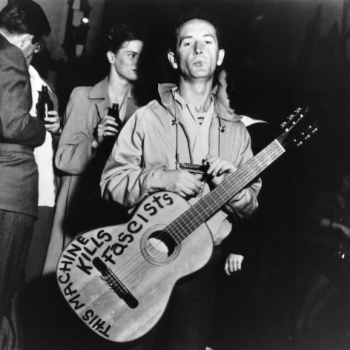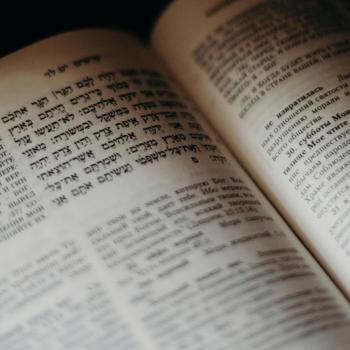CHAPTER 1
In Gorman’s “guide to reading Paul,”[1] he begins by insisting that we must read Paul as scripture speaking “to us and for God.”[2] Following Joel Green, Gorman argues we should acknowledge our oneness across time and space with Paul’s first audience, i.e., we are part of the same community which Paul originally addressed in his writings.[3] He maintains that “the writers and readers of scripture constitute one community of faith.”[4]
CHAPTER 2
It’s important to note, Gorman points out, that Paul did not “convert” in the sense that he joined a new/different religion. Paul remained a Jew, but one who was convinced that Jesus was the resurrected Messiah and Lord.[5] He did “convert” in the sense that he “changed convictions, conduct, and community.”[6] His conversion was also a call and commission as an apostle, something which Paul openly embraced about himself.
Gorman rightly points out that non-violence is an often overlooked, yet important element of Paul’s teaching.[7] Paul rejected both the violence of zealous Jewish nationalism and the imperial violence of Rome which was “violence in the name of justice, peace, and security.”[8] This subversive politic is a part of Paul’s writing and Gorman believes Paul viewed it as an inevitable consequence of the gospel that is coupled with a value for diversity of gender, ethnicity, and socio-economic status.[9]
CHAPTER 3
Gorman recognizes the title of missionary can be misleading in present day. He sees Paul as a missionary, caught up in the divine mission, spreading the good news which would then call into being little “transformed, peaceable, multicultural communities”[10] of Christ followers. Paul’s own suffering was assumed as part of his vocation which: 1) was an inevitable consequence of the gospel, 2) lead to growth of the gospel, and 3) confirmed his calling as an apostle.[11]
CHAPTER 4
Gorman says one cannot construe Paul as an evangelist of Billy Graham’s ilk. The good news which Paul proclaimed was not primarily one of personal conversion. Gorman calls it a “theopolitical announcement, that challenged – and challenges – the very core of how people relate to one another.”[12] The good news Paul proclaimed posed and poses an inherent challenge to the “secular political” and to the very concept of secularity. He notes, “This does not mean that Paul’s gospel was political rather than religious; it is just that the two were inseparable.”[13]
Gorman contrasts the text of a Priene inscription which equates euangelion to the good news of the birth of an emperor with the text of Isaiah which expects the good news of God’s salvation. He deftly asserts that the gospel which Paul preached was at one time announcing that Isaiah’s prediction was being fulfilled, and the Priene proclamation was being challenged. This challenge is integral to the character of euangelion.[14]
I appreciate Gorman’s continued translation/pairing of “faith of Christ,” with the parenthetic “faith in Christ” as a possible alternate reading. I appreciate that he gives the former reading prominence without failing to list the latter reading because I have become convinced that “faith of Christ” should be listed prominently – listed first – but “faith in Christ” must remain part of the picture we see when we encounter this language.
CHAPTER 5
Gorman brilliantly explores the interlocking and overlapping nature of the current age in sharp distinction to the common, polarized, dualistic, and ultimately misleading notions of Paul’s apocalyptic framework.[15] This improper apocalyptic view he calls “radical disjunction,”[16] results in this dualistic distortion and gives rise to twisted interpretations such as the “Left Behind,” phenomenon. He frames the whole of Paul’s gospel within Paul’s apocalyptic view that they were living in “the overlap of the ages.”[17]
I truly appreciate Gorman’s emphasis of the major Pauline theme: being “in Christ.” He describes it as “a personal, though not private, and a corporate experience.”[18] Our understanding of this central tenet of Paul’s experience and theology must recognize the corporate community’s experience of being shaped by the resurrected Messiah as we look both to the past and the future to shape the present.
CHAPTER 6
Gorman reminds us that the “God” of the “Gospel of God” has a history or a story. The Old Testament notion of God is not simply a dark violent God as is often assumed, but a relational God of imagination, creativity, love and grace. The new work of God has continuity with this God of Israel, yet must be seen in new ways, i.e., Trinity, new covenant, etc.[19]
CHAPTER 7
Gorman notes that Paul sees sin not so much as a personal action but as a power. In fact it is one of the twin powers which constitute the main enemy of humanity: Sin and Death. He says in a footnote that though they are not separable, the cross deals more directly with sin and the resurrection deals more directly with death. I have never before considered that correlation between sin/death and cross/resurrection quite so directly.[20]
CHAPTER 8
Given Paul’s realization that God had raised Christ, he now viewed Jesus’ Messiah-ship as vindicated and validated by God. Two major effects of this were: 1) If Jesus is Messiah, then “God’s way of saving Israel and redeeming the world is not by inflicting violence, but by absorbing it.”[21] 2) The purpose of the time between the resurrection of the Messiah and the general resurrection will be to renew Israel and reconstitute the people of God (Jew and Gentile included).[22]
There is a simple yet essential point Gorman notes concerning Paul’s view of the lordship of Jesus. “If Jesus is Lord, Caesar is not.”[23] The peace and lordship of Christ did not look like what was offered by the emperor. In fact, the two were mutually exclusive. One cannot simultaneously pledge allegiance to Jesus and Caesar. What might this say about Americanism or saying “I pledge of allegiance to the flag?”
CHAPTER 9
Gorman notes that, historically, there have been two main interpretations of Justification in Paul: 1) the typically protestant interpretation of imputed righteousness (declaration), and 2) the typically Catholic interpretation of imparted righteousness (transformation). The latter sees a divine action which actually transforms the one who believes. The former relies heavily on law-court imagery and perhaps even a legal fiction.[24] He argues for justification which is connected to the righteousness and justice of God. Justification is to set-right through reconciliation and embrace, not violence.[25]
Gorman believes that Paul views faith and obedience as two sides to the same coin. Faith is more than trust or intellectual affirmation; it is sharing in the death of Christ and the resurrection of Christ which manifests itself in renewed and right relationships.[26]
Thus by defining justification and faith as described above, justification by faith are subsumed under the moniker, “being in Christ,” or a “mutual indwelling, or reciprocal residence.”[27] This is not a private mystical experience, but one founded and grounded in the ekklesia as one becomes part of the covenant people of God. Justification is participation in God in the context of the people of God.[28] “Being in Christ” is being justified, crucified and occupied by God through Jesus Christ.
CHAPTER 10
Chapter Ten is one of the most concise overviews of ecclesiology I’ve read. Paul combines the assembly (qahal) of Israel and the Greek ekklesia into his vision of the church. Using images such as body, temple, unity/diversity, and family Paul leads the church into worship and sacraments meant to pattern/guide their life together in the Spirit.[29]
CHAPTER 11
In his treatment of the Pauline triad of faith, hope and love Gorman argues for an understanding of faith (pistis) that exists at the nexus of obedience, faithfulness, trust and conviction. The Pauline notion of faith is rooted in Jesus and in the Old Testament and as such is most accurately described as a “covenantal” or “relational” faith which results in a pattern of imitating Christ best described as cruciformity.[30]
CHAPTER 12
Gorman deals with eschatology in this chapter which is actually very straight forward and concise. He does draw very good distinctions between, on one hand, what Paul says about last things, i.e., return of the king, judgment of actions, resurrection as eternally embodied life, and the restoration of the cosmos and, on the other hand, what is commonly touted by the Left Behind crowd, J.N. Darby disciples, and the pop-theology of rapture and a double second coming. Gorman notes, using McLaren’s image of a “religious death wish,”[31] that this view is dualistic, fatalistic, not very Jewish, nor very Christian at all.[32]
CHAPTER 13
Gorman sketches his picture of a Christian community which is called toward hearing, understanding and performing the gospel as they become and are becoming a part of the covenant people of God. We would do well to regard his “marks of the church,” i.e., holiness, peaceableness, inclusion, cruciformity, and justice, as hallmarks of Pauline theology.[33]
[1] Ibid., p.6.
[2] Ibid., p.5.
[3] Ibid., p.3.
[4] Ibid., p.4.
[5] Ibid., p.16.
[6] Ibid.
[7] Ibid., p.18.
[8] Ibid.
[9] Ibid., p.19.
[10] Ibid., p.22.
[11] Ibid., p.26-27.
[12] Ibid., p.41.
[13] Ibid., p.44.
[14] Ibid., p.43-44.
[15] Ibid., p.59-61.
[16] Ibid., p.58.
[17] Ibid., p.62.
[18] Ibid.
[19] Ibid., p.73-75.
[20] Ibid., p.86-87.
[21] Ibid., p.95.
[22] Ibid., p.96-97.
[23] Ibid., p.102.
[24] Ibid., p.115-116.
[25] Ibid. p. 120-122.
[26] Ibid., p.123-126.
[27] Ibid., p.127.
[28] Ibid., p.128-130.
[29] Ibid., p.132-139.
[30] Ibid., p. 153-156.
[31] Ibid., p. 178.
[32] Ibid., p. 167-139.
[33] Ibid., p. 185.













